Buoys Support Recreation in National Marine Sanctuaries
By Matt Malinowski
September 2023
Large block letters that spell out “Monohansett” run across the side of a blue and white mooring buoy as it bobs on the surface of Lake Huron. It is one of thousands of mooring buoys throughout the waters of national marine sanctuaries, marking the location of incredible ecosystems and historic sites. Waves of boaters, divers, and snorkelers pull up to the buoy to visit Monohansett each year — it is one of dozens of shipwrecks indicated with a mooring buoy in Thunder Bay National Marine Sanctuary.

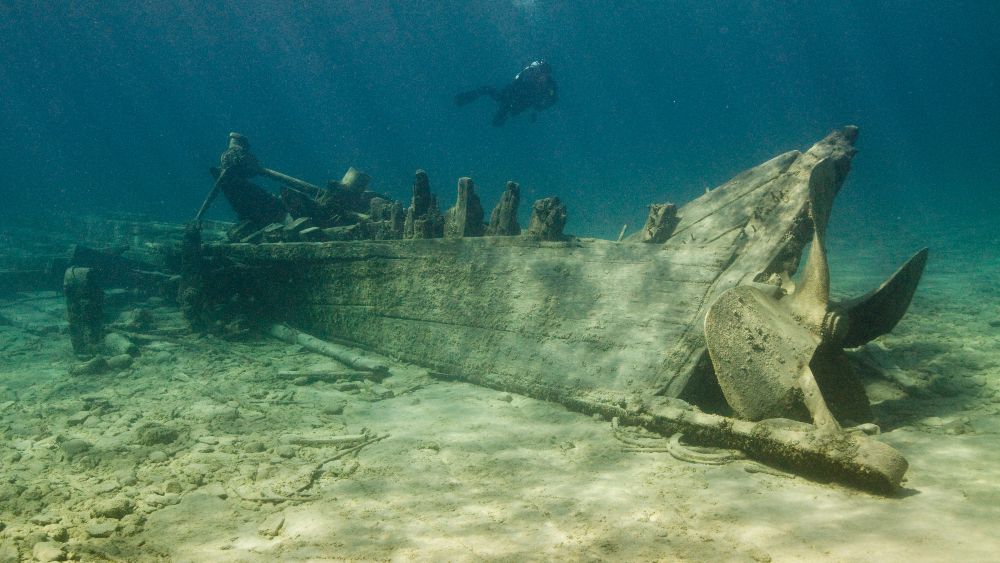
Mooring buoys, like the one bobbing above Monohansett, are a vital resource that help recreationists, anglers, and explorers, get into their sanctuary, while also promoting safe and respectful exploration of marine protected areas. Vessels can easily and safely secure themselves near points of interest by properly tying up to a floating yellow line that extends from the mooring buoy. Without mooring buoys, anchors from visiting vessels would need to plunge into the water below, potentially disturbing delicate underwater historical resources, seagrasses, or corals. Mooring buoys build connections between people and the features of national marine sanctuaries while promoting responsible recreation and stewardship of aquatic sites.
Buoy Season
Mooring buoys casually float in our national marine sanctuaries, but beneath the water they require maintenance and monitoring from buoy teams across the sanctuary system. In preparation for the summer each year, the buoy team at Thunder Bay National Marine Sanctuary places dozens of seasonal mooring buoys at wreck sites and geological features within the sanctuary. According to Phil Hartmeyer, maritime archaeologist and unit diving supervisor at Thunder Bay National Marine Sanctuary, maintaining mooring buoys in the cold water of Lake Huron requires a clear plan and a specialized set of skills. As lake ice starts to melt in the spring, divers begin deploying up to five buoys per day at designated sites across the sanctuary. The divers must wear drysuits to protect themselves from the frigid 40 degree Fahrenheit water and work efficiently to maximize their underwater productivity.
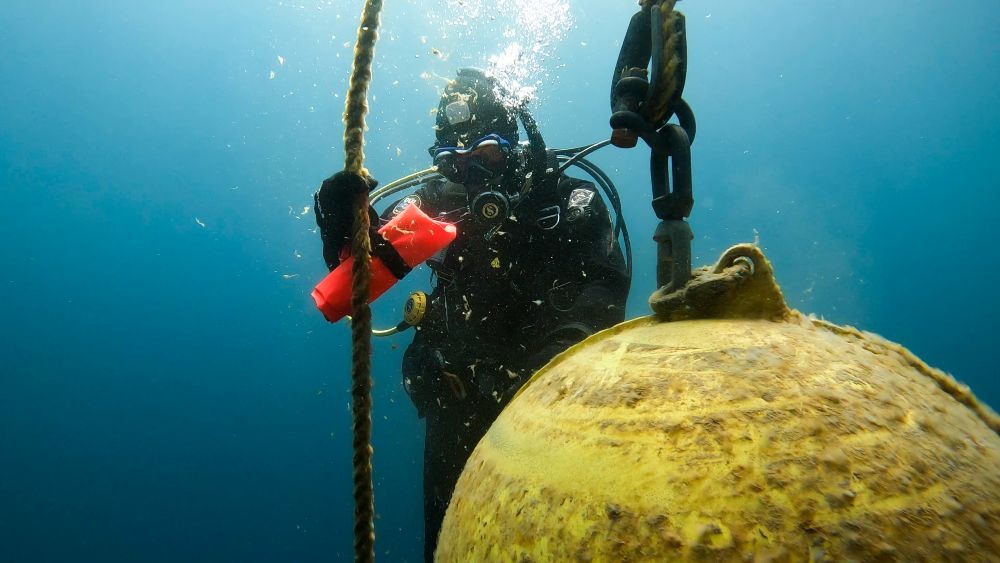
By May, the mooring buoys of Thunder Bay National Marine Sanctuary are all installed and able to be used by recreationists throughout the summer months. The team monitors and maintains installation across the summer season. Steve Kroll, a member of the Thunder Bay Sanctuary Advisory Council, knows the value of the seasonal mooring buoys. “When buoys are missing or if wrecks are not permitted to have them, damage has occurred from boat anchoring.” says Kroll. The wrecks are delicate artifacts that have survived over a hundred years in these waters, and safeguarding them remains a key priority in Thunder Bay National Marine Sanctuary.
In October, the team returns to each site to disconnect buoys for winter storage. The workload is high, but Hartmeyer and his team see the benefits firsthand. “Sites are being protected, and responsible access is increasing,” says Hartmeyer, “sanctuary users are utilizing the [mooring] systems more than ever.” As more people get into their sanctuary, the mooring buoys at Thunder Bay National Marine Sanctuary help facilitate safe and sustainable activity in a vast underwater maritime museum.
Where It All Began
Thunder Bay is not the only national marine sanctuary to have a ‘buoy brigade’, as mooring buoys are found in waters across the sanctuary system. Florida Keys National Marine Sanctuary has the longest running buoy program of any national marine sanctuary and has an army of mooring buoys within its boundaries. In fact, The first real-world test of the buoy system happened in 1981 at Key Largo’s French Reef, a frequently visited location. “The buoy program is 42 years old this year — older than many of our staff,” says Maritime Heritage Coordinator Brenda Altmeier. Over the decades, the mooring buoys of Florida Keys National Marine Sanctuary have offered an alternate way to stabilize watercraft without damaging the environment below.

The dazzling reefs of Florida Keys National Marine Sanctuary are teeming with life from nudibranchs and seagrasses to crustaceans and sea stars. A misplaced anchor from a visiting vessel could cause irreversible harm to corals and other inhabitants of the underwater world. “I truly feel that the buoys are the most beneficial and recognizable component of our program,” says Altmeier. Buoys are core to the conservation and outreach goals of the sanctuary, sustainably connecting visitors with marine habitats and preserving them for the future.
Brady Booton, a buoy team member at Florida Keys National Marine Sanctuary since 2010, agrees that maintaining buoys in Florida Keys National Marine Sanctuary is vital to the mission of sanctuaries. Booton and his teammates work in year-round heat and humidity performing physical tasks like pressure washing buoys, scraping marine growth from buoy lines, and performing deep dives for installation and line maintenance. Buoys are sometimes freed from their mooring by weather, waves, or human action and need to be repaired or replaced. Mooring buoys in Florida Keys National Marine Sanctuary even saved a freediver’s life after he cut them free to use as a flotation device when he was temporarily lost at sea.
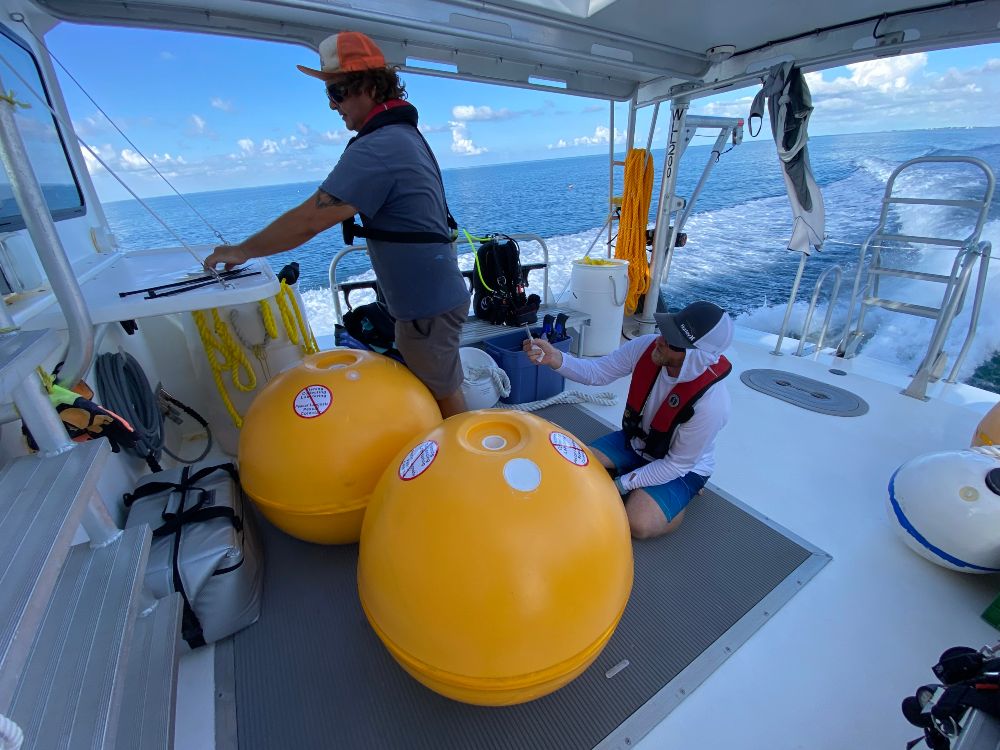
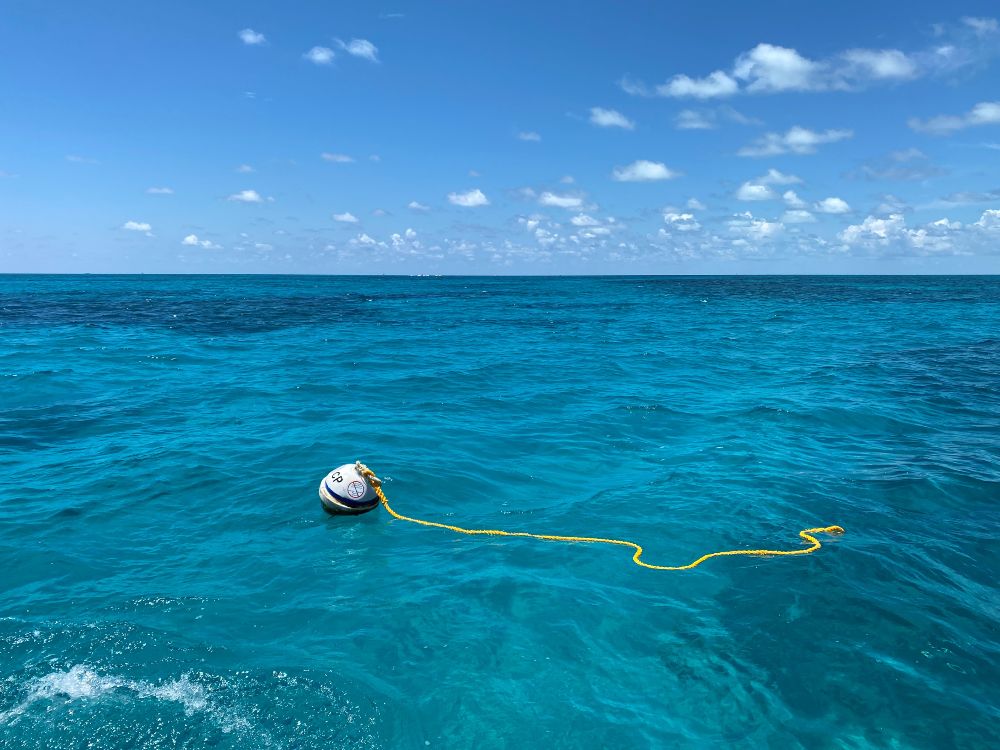
Maintaining buoys is hard work, but Booton and his teammates understand the value of their efforts. “Knowing that you are working to protect the places that you love instills buoy team members with a strong sense of pride,” says Booton. “We are able to provide a service for our community in giving boaters a place to tie up, resulting in a lesser amount of impact, and that is extremely rewarding in and of itself.” For Booton, seeing the concrete benefits of a successful buoy system keeps him going season after season.
These buoy teams of national marine sanctuaries tether the public to this country’s underwater wonders and connect visitors to the sanctuary system’s conservation goals. “Each time sanctuary users tie up to a buoy they become part of the resource protection mission to preserve these sites for generations to come,” Hartmeyer said. From the warm waves of the Florida Keys to the chilly waters of the Great Lakes, mooring buoys make sustainable, safe recreation possible for all visitors and ensure the longevity of precious biological and cultural resources far into the future.
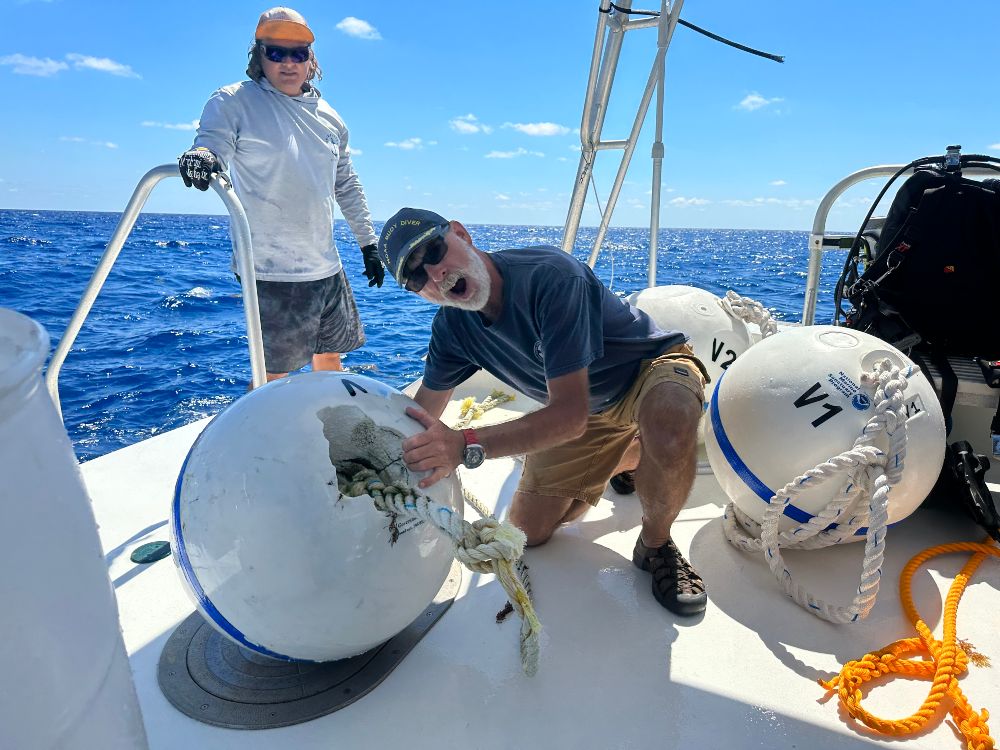
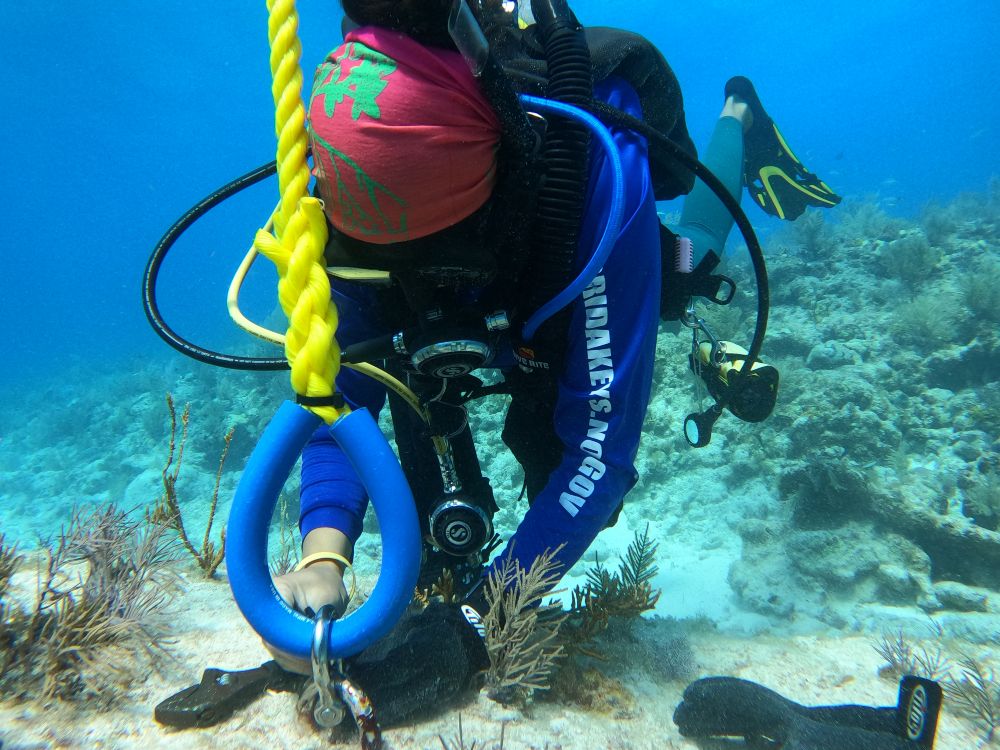
The Legacy of John Halas
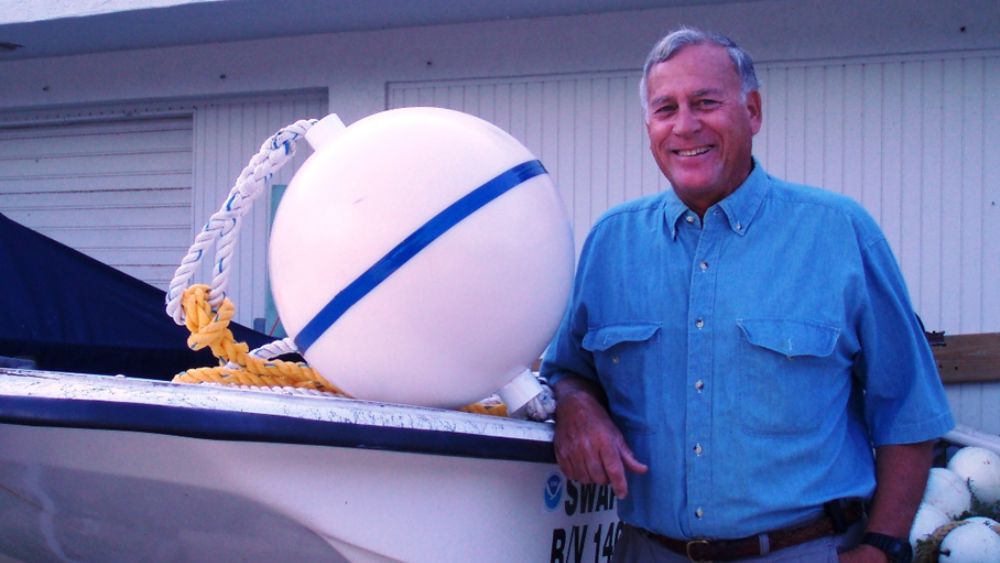
The mooring buoy system in use today, not only within national marine sanctuaries, but throughout the world, is itself a story of the commitment and follow-through of former resource manager for Florida Keys National Marine Sanctuary, John Halas. Discover more about Halas, his work, and the large contribution he has made to the history of mooring buoys in the links below:
John Halas
Mooring Buoys: A system anchored in Florida Keys history
John Halas: International Man of Mooring Buoys
Ocean Hero John Halas Retires
Vintage Documentary: Exploring Florida Keys National Marine Sanctuary
Innovation Underway
Flower Garden Banks National Marine Sanctuary, located in the Gulf of Mexico about 100 nautical miles offshore from Galveston, Texas also uses a system of mooring buoys. The mooring design was modeled after those used in Florida Keys National Marine Sanctuary, and modified to be able to accommodate larger vessels in a deeper environment.
The buoy team at Flower Garden Banks National Marine Sanctuary has been experimenting with some updated buoy system designs. According to research operations specialists Josh Harvey and Ryan Hannum, the new systems are designed to keep tension on the anchor shackle to reduce the wear and tear on the coral heads and U-bolt. “The new design utilizes subsurface buoys, which keeps the shackle up and center and reduces rubbing and friction that can lead to stretching and breakage,” said Hannum. The prototypes were deployed at East Flower Garden Bank at depths around 65 feet on Sept. 1, 2023, and the team plans to use data from this initial deployment to further fine-tune the designs.
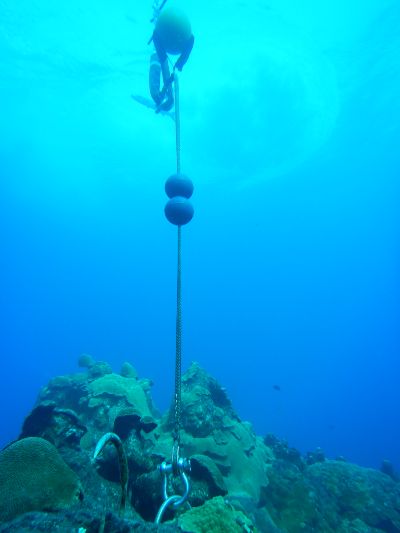
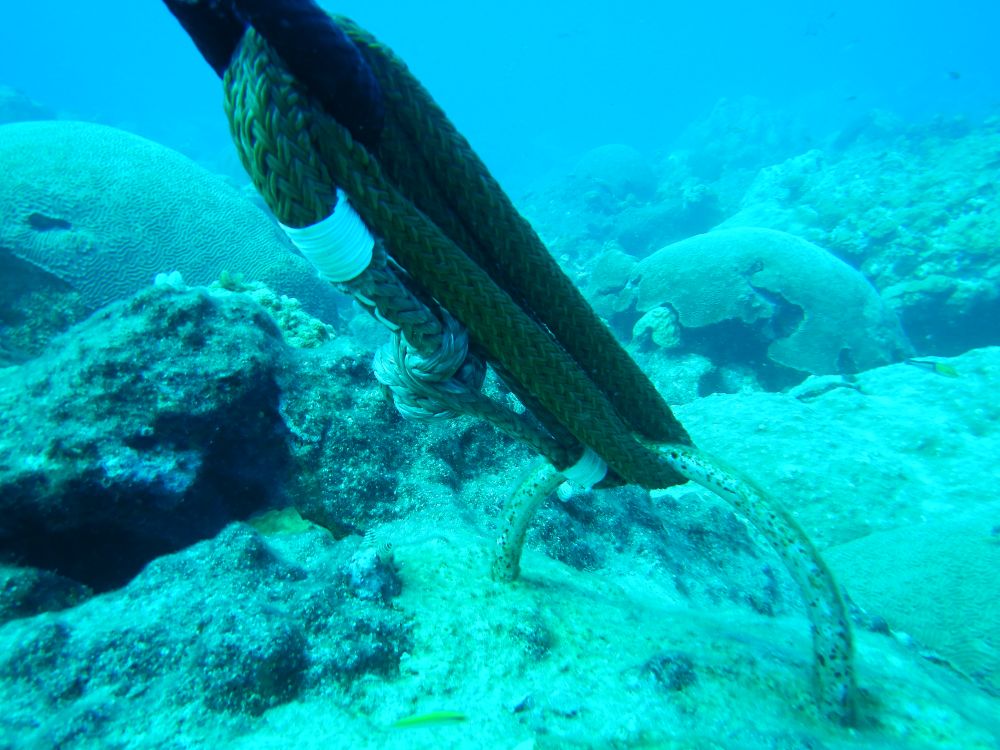
“We're excited to be developing this new style of mooring that we expect will extend the life of our gear and lead to less human impacts within the sanctuary,” said Hannum.
Buoy Outreach and Tips
Learning good habits for mooring buoy use and finding location information about buoys in national marine sanctuaries is simple. Sanctuary websites provide valuable information like mooring buoy GPS coordinates, guides to use, detailed infographics, and exploration resources like interactive story maps. Florida Keys National Marine Sanctuary has the Marine Sanctuary Explorer App, a downloadable app for your phone or other electronic device that makes finding mooring buoys and maintaining safe boating habits through the sanctuary a breeze. Buoys make it easy to explore everything national marine sanctuaries have to offer. Renew that fishing license, inspect your dive gear, put on that wetsuit and get into your sanctuary!
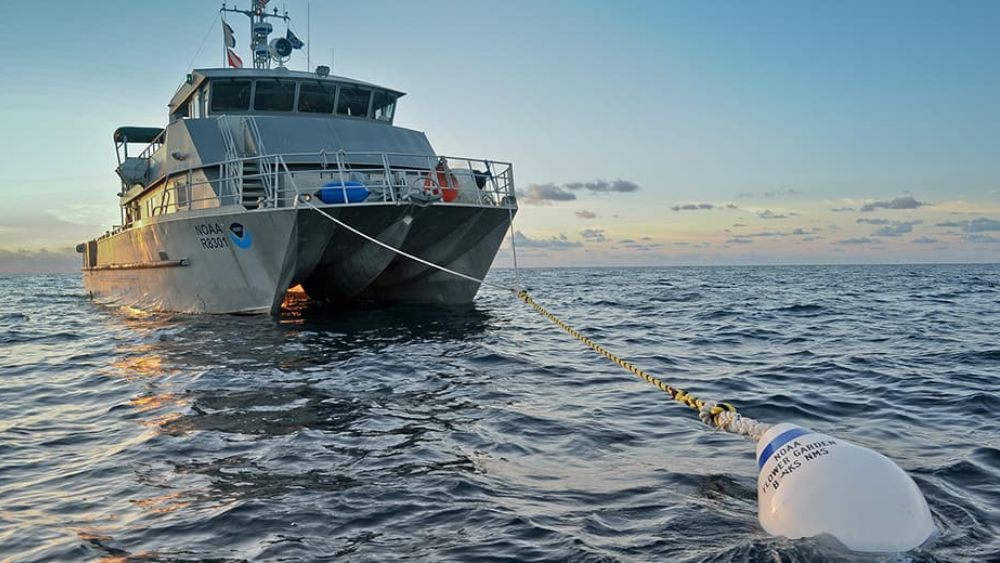
Matt Malinowski is a guest writer and former communications intern at NOAA’s Office of National Marine Sanctuaries

